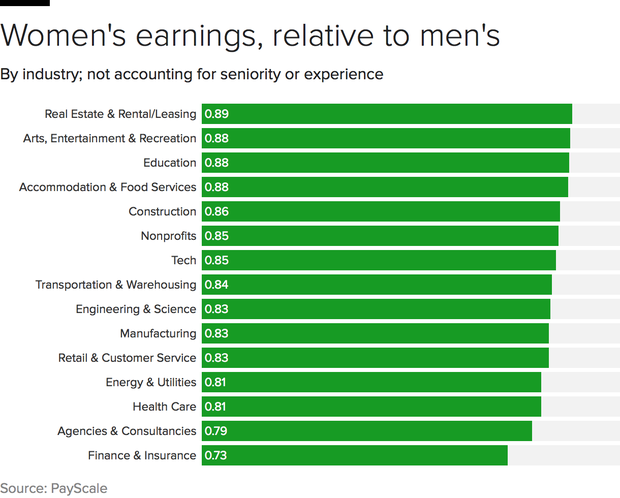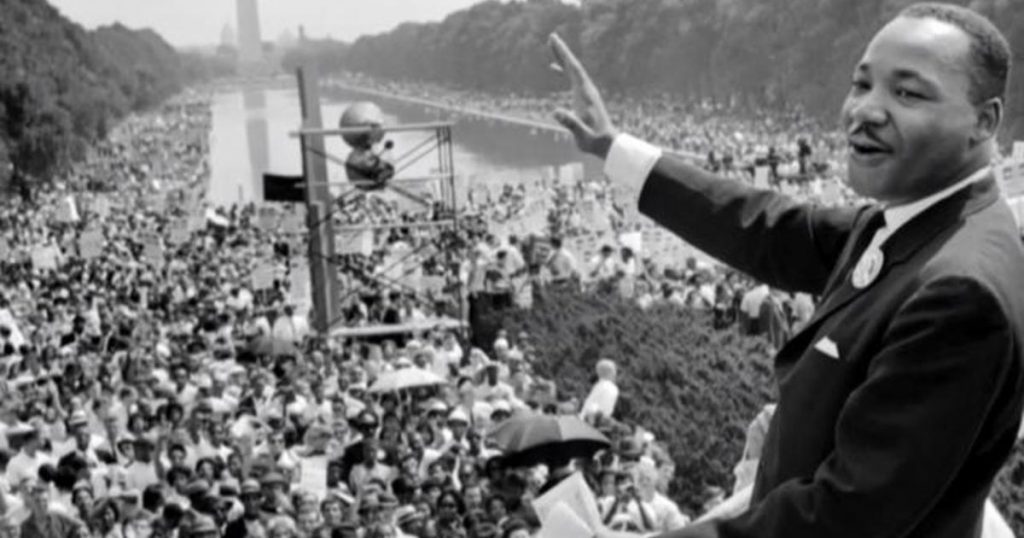“Equal pay for equal work” became a rallying cry in the 1960s, and it hasn’t gone away since then.
It seems nearly every large employer in America has lately been targeted with a pay discrimination suit. Google (GOOG), Facebook (FB), Uber, Microsoft (MSFT) and Oracle (ORCL) are just a few of the companies that have been accused of discriminating against women in compensation.
But it’s not overt discrimination against women that’s responsible for the lingering difference between what men and women are paid, according to recent data. A PayScale report released on Thursday notes that, when controlling for type of job and years of experience, the gap between men’s and women’s pay shrinks to near-parity. Young women make 98 percent of what a man makes, and for women over 45, the figure is 97 percent.
That gap is much larger when looking at raw figures — the median working woman compared with the median working man. By that measure, no industry cracks the 90 percent mark. That means “women are underrepresented in the best-paying jobs in the labor market, and they’re underrepresented in the leadership roles,” according to Lydia Frank, vice president at PayScale.
By mid-career, men are 70 percent more likely than women to be in executive roles, PayScale found. By late career, defined as age 45 and over, they’re 142 percent more likely to have a higher-profile role — and its attendant higher salary.

The financial sector does the worst in this measure, with women earning less than three-quarters of men’s pay. Because of the outsize salaries in finance, that gap has a disproportionate effect on women’s pay overall, effectively widening the average gender pay gap.
Finance is not known for being particularly friendly to work-life balance, and that, too, affects women disproportionately. Workers who can’t balance their job with other obligations — like dealing with personal health issues, getting a degree or taking care of family — can end up leaving the job market altogether. When they return to work, sometimes years later, they’re penalized by being paid less than a comparable worker who is hired straight out of another job.
“The longer you’re out of the workforce, the bigger the pay penalty,” said Frank. A person hired after three months of unemployment on average earns 3 percent less than a comparable worker who is switching jobs, PayScale found. After a year of unemployment, the pay penalty grows to 7 percent.
When PayScale analyzed the reasons for men’s and women’s unemployment, some stark differences emerged. Men who were unemployed were more likely to have been in school or have quit their previous job. Women were more likely to have relocated or to have been caring for a child.

The pay gap highlights the long distance companies still have to go to allow workers to handle life interruptions — including caring for families — without penalizing their jobs. With unemployment reaching record lows, businesses would do well to consider ways to encourage full labor participation, Frank said.
That includes maternity and paternity leave. That could also include policies like pay transparency, which not only help reduce pay disparities but can increase workers’ morale and productivity, according to recent studies.
“It’s so important for organizations to think about how they’re potentially contributing to the ways we value or undervalue the work that women do,” Frank said. “I think we have to stop putting all the onus on women to fix this.”
© 2018 CBS Interactive Inc.. All Rights Reserved.

